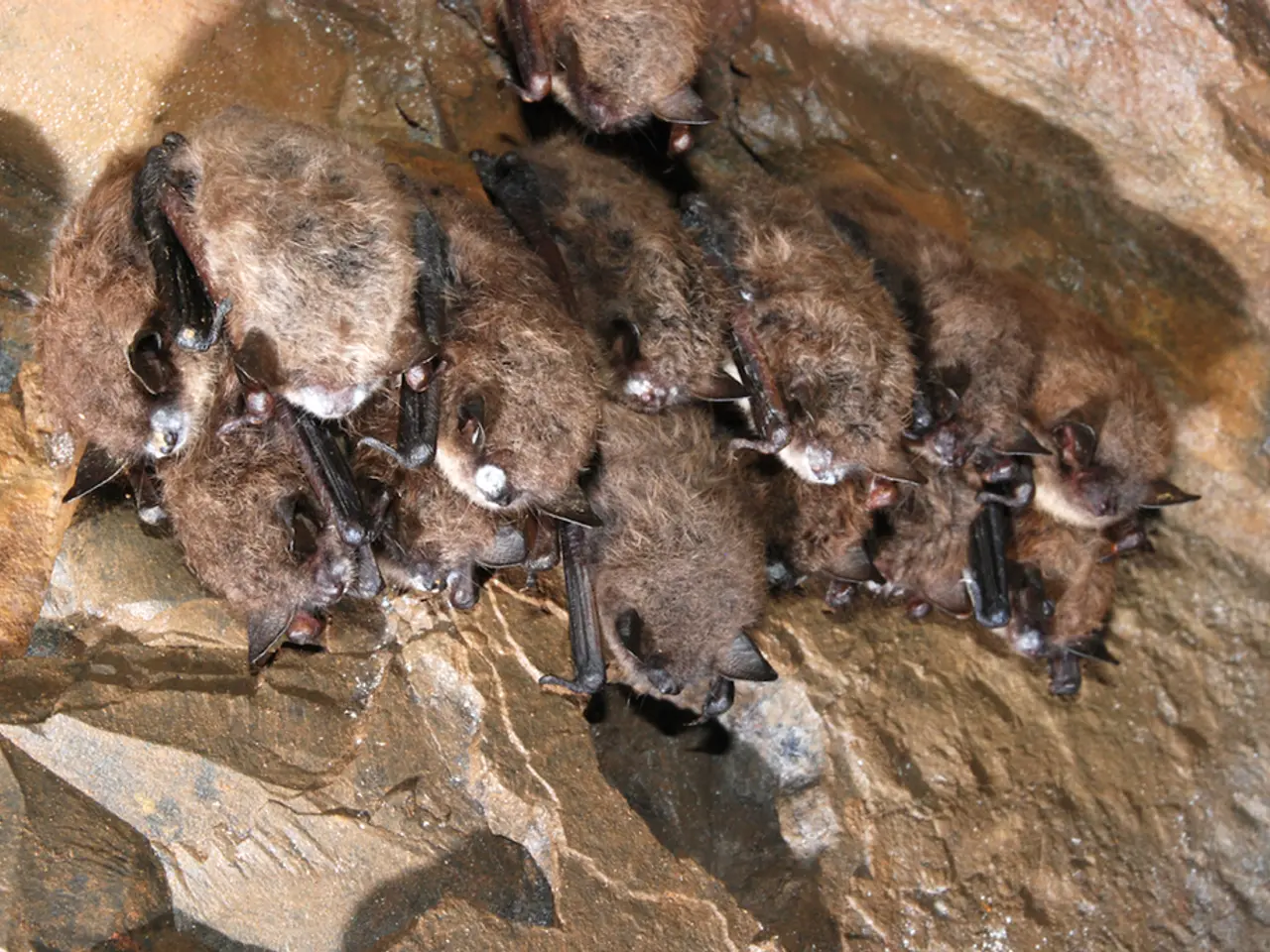International "Batnight" Event in Bremen Offers Multiple Bat Walks by NABU
In the heart of Germany, bats find essential living spaces in various locations, from attic floors and cellars to behind roller shutters and facades, often unnoticed as "subtenants." However, their habitats are under threat due to factors such as deforestation and insensitive building renovations.
Late summer is a critical time for European bat species as they prepare for the cold months and build up fat reserves, making them more observable. This period is also when four species of bats in Germany are classified as endangered, and another three are at risk. Among the common species, the greater horseshoe bat is a notable resident, but all bat species are facing food shortages due to insect decline.
The greater horseshoe bat, a species featured in the top image, is particularly reliant on large mature forests with abundant old trees, especially those with woodpecker holes, for roosting and hibernation. Greater noctule bats, another threatened tree-roosting species, depend on these forested areas for a variety of roosting sites, including tree cavities and woodpecker holes, facilitating thermoregulation and predator avoidance.
Caves also play a crucial role in bat conservation, serving as critical winter hibernacula for bats such as the endangered greater horseshoe bat. These subterranean dwellings provide sizeable colonies and stable microclimates essential for survival during the cold season.
To help preserve bat habitats, people can take several actions. Sustainable forest management is key to preserving large old trees with natural cavities or woodpecker holes, which serve as essential bat roosts. Installing artificial bat roosts (bat boxes) in forests and urban green spaces can supplement natural roosting habitats where trees or cavity availability are limited.
During renovation, it's possible to preserve bat habitats by installing bat boxes, flat boxes, or cave boxes. It's also important to avoid tree removal or disturbance during bat roosting seasons (April through September), which coincide with maternity colonies when females raise young in tree cavities.
Raising awareness about the importance and vulnerability of caves and limiting human disturbance during winter hibernation periods is also crucial for protecting overwintering bats. Engaging in urban conservation efforts, such as creating and maintaining bat-friendly parks and care stations, can support bats adapting to urban environments.
NABU Bremen is doing its part to conserve bats by organising three bat walks this August and September. On Saturday, August 24th, Bekil Nowotsch will accompany the bat search at the Vahrer See. Participants can also join walks on September 6th, 13th, and 20th, at Hof Kaemena in Oberneuland, Blumenthal, and the Mahndorfer See, respectively. Registration is required by contacting 0421 / 48 44 48 70 or emailing [email protected].
The International Bat Night, held annually on the last weekend in August, aims to raise awareness about the threat to bats. This year, the event will take place on the night between August 24th and 25th. By taking action to protect bat habitats and participating in events like these, we can help ensure the survival of these fascinating creatures in Germany.
[1] European Bat Action Plan (EBAP) 2015-2021. (2015). Retrieved from https://ec.europa.eu/environment/nature/conservation/species/bats/ebap_en.htm
[2] German Bat Conservation (2021). Retrieved from https://www.fledermaus-info.de/
[3] Bat Conservation Trust (2021). Retrieved from https://www.bats.org.uk/
[4] Bat Conservation International (2021). Retrieved from https://www.batcon.org/
Read also:
- Budget cuts at federal and state levels jeopardize advancements in fighting HIV and AIDS within Dallas County
- Strategies for Maintaining and Boosting Physical Activity as You Grow Older
- Understanding Prediabetes: A Precursory Condition to Diabetes
- Strategies for Strengthening a Nigerian Infant's Immune System




